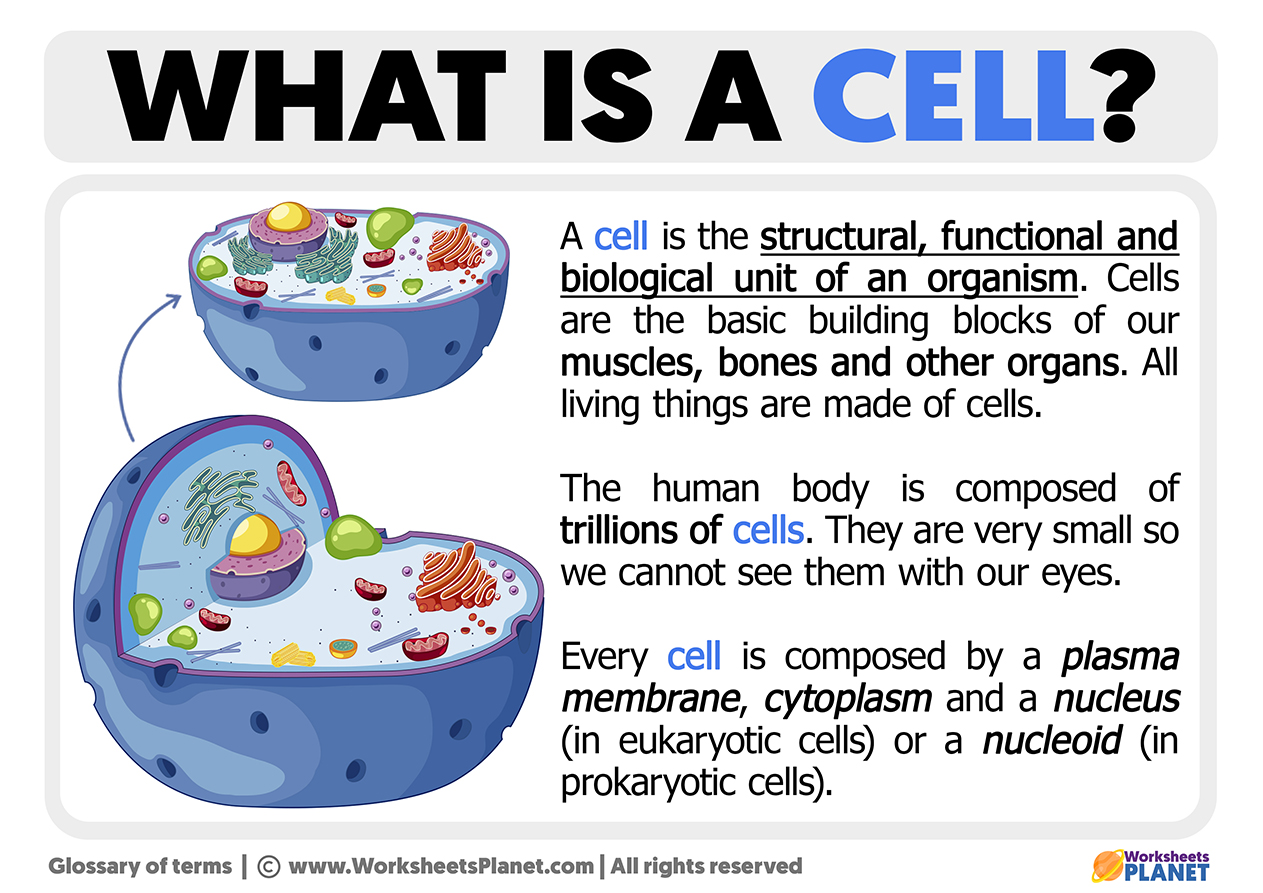The cell is the most important element and fundamental unit of living beings that contains all the material necessary to maintain growth, nutrition, reproduction, and other vital processes. Cells have different shapes, sizes, and functions.
Inside the cells, we can find all the necessary components to carry out its functions: water, minerals, lipids, proteins, sugars, and nucleic acids.

Unicellular organisms, such as bacteria and protozoa, are made up of one cell. On the other hand, animals and plants are made up of many varied cells, which is why they are known as multicellular or multicellular organisms. In this case, cells come together to form tissues that have specific functions.
Human beings have almost 40 trillion cells. The cells of the human body change over time. Only the nerve cells remain from birth.
Cell types
The main classification of cells includes prokaryotic and eukaryotic cells:
- Prokaryotic cells are the simplest cells. They only have a plasma membrane surrounding the cytoplasm and genetic material. Some examples of prokaryotic cells are bacteria and archaea.
- Eukaryotic cells: They also have a plasma membrane and cytoplasm. Their genetic material is inside a membrane, forming the nucleus. Eukaryotic cells are in all plants, fungi, and animals. Our cells, the human body ones, are of the eukaryotic type.
Eukaryotic and Prokaryotic Cell
Prokaryotes have their genetic material dispersed in the cytoplasm. Eukaryotes have a nucleus, where the cell’s genetic material is found.
Eukaryotic cells, in turn, can be classified into:
The animal cell: has a plasma membrane, nucleus, cytoplasm, and organelles such as mitochondria, ribosomes, and lysosomes.
The plant cell: has a plasma membrane, nucleus, and cytoplasm. Plant cells have an outer wall of cellulose, a central vacuole that occupies ample space in the cell, and chloroplasts. In the chloroplasts, chlorophyll absorbs light in the process of photosynthesis.
The Cell parts
In cells, we can distinguish the following structures:
The plasma membrane is a flexible structure that encloses the cell’s contents. It acts as a barrier, letting in nutrients, water, and oxygen and letting out carbon dioxide and other substances the cell has to eliminate.
The cell nucleus: is a structure within the cell, formed by a membrane or nuclear envelope, which contains the genetic material of eukaryotic cells. It is the center that controls the activities of eukaryotic cells. In prokaryotic cells, there is no nucleus, so the genetic material is scattered.
The cytoplasm is the cell’s interior between the nucleus and the plasma membrane. The cytoplasm is made up of a gelatinous material called hyaloplasm.
Organelles: they are responsible for various cellular activities, such as storage, digestion, cellular respiration, material synthesis, and excretion. Organelles are responsible for supporting cellular life. Among the organelles, as mitochondria, ribosomes, endoplasmic reticulum, Golgi apparatus, lysosomes, and vesicles.
Characteristics of Cells
- Microscopic dimensions: Most cells are visible only under a microscope. Only few cells can be seen with the naked eye. The smallest cells are prokaryotes, such as bacteria.
- Irregular bodies: we can get spherical, cubic, flattened, “S”-shaped, star-shaped, spiral, and cylindrical cells.
- They exchange energy and matter: in all cells, there are exchanges of energy and matter with the outside environment.
- They can reproduce: cells can produce other identical cells through cell division.
- Cells obtain energy through cellular respiration: cells carry out the process of cellular respiration, which is based on processing sugars in the presence of oxygen or other molecules to obtain energy.

